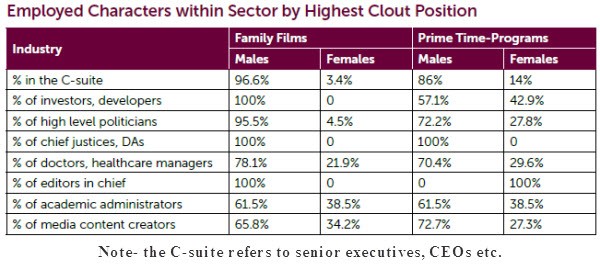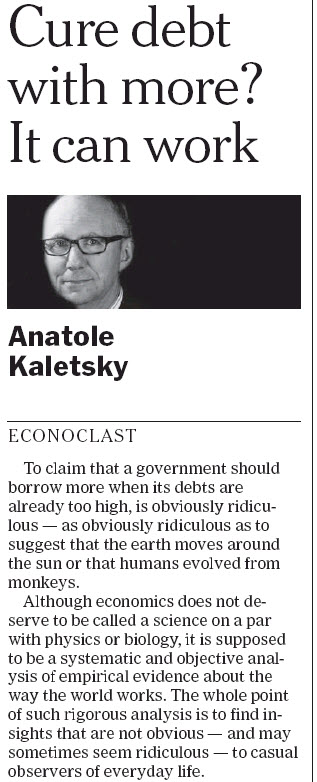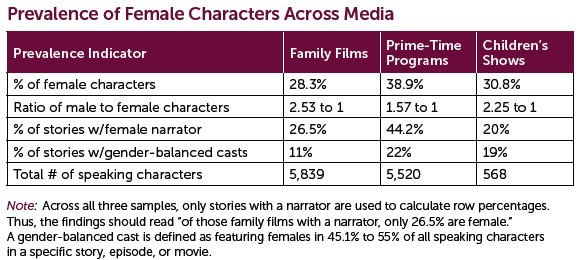Stereotyped, s-xualised, and underrepresented. That’s the lot of women and girls on movie and television screens. And the discrimination extends all the way down to TV shows for children and family movies.
A new report from the Geena Davis Institute on Gender in Media (founded by the Oscar-winning actress) details just how alive gender imbalance is in the media. From analysing 11,927 speaking characters for gender roles across top-grossing family films, prime time TV and children’s shows, it provides multiple indicators pointing to the fact that females are not as prevalent on screen as males.
“Traditional domestic roles are still gender linked in entertainment, but only in certain media and on certain indicators. In family films, females are more likely than males to be portrayed as parents (56% vs. 44.1%) and depicted in a committed romantic relationship (65.7% vs. 54.1%).6 In children’s shows, only parental status varies by gender (females=60% vs. males=29.3%).”
Interestingly, no gender differences emerge in prime time across these two domesticity variables.
S-xiness is gendered across all three media, with females far more likely than males to be depicted wearing s-xy attire (tight or alluring apparel), showing some exposed skin (between the mid chest and high upper thigh region), thin, and referenced by another character (verbally or nonverbally) as physically attractive or desirous.”

When it comes to the jobs women and shown as having, the glass ceiling is well and truly reflected. In family films, few females occupy clout positions across eight different sectors with only two women in the surveyed programs being shown in the executive office of major corporations (i.e. CEOs, CFOs, Presidents, VPs, GMs). Not one female character is depicted at the top of the financial sector (e.g. investor, developer, or an economic official), legal arena (e.g., chief justices, district attorney), or journalism (i.e. editor in chief) across the sample of 129 G, PG, or PG-13 rated films. In comparison, women represented 25.5% of all chief executives in 2010.

Holding on to that surplus. Prime Minister Julia Gillard is not for turning on that budget surplus – at least not yet. She was still spruiking her government’s determination to achieve it on ABC radio this morning. Clearly there is a reluctance to provide another example of a broken promise and that’s understandable. Truthfulness is a major issue for her.
But you do have to wonder why the surplus promise was ever made. Its existence is evidence of just how reactive the government has been to what the PM refers to as her negative opponents.
Things could be worse. We could be in Europe where the surplus fetish has countries moving back into recession as fiscal austerity keeps biting.
Quote for the day. Which brings me to this comment from this morning’s International Herald Tribune:

News and views noted along the way.
- Get talking — cognitive behavioural therapy ‘can reduce depression’
- The next productivity revolution: the ‘industrial internet’
- Dude, should marijuana be legalised and taxed? From this week it’s legal in Washington State, USA
- Julie Andrews’ famous singing voice ruined by throat operation








Crikey is committed to hosting lively discussions. Help us keep the conversation useful, interesting and welcoming. We aim to publish comments quickly in the interest of promoting robust conversation, but we’re a small team and we deploy filters to protect against legal risk. Occasionally your comment may be held up while we review, but we’re working as fast as we can to keep the conversation rolling.
The Crikey comment section is members-only content. Please subscribe to leave a comment.
The Crikey comment section is members-only content. Please login to leave a comment.